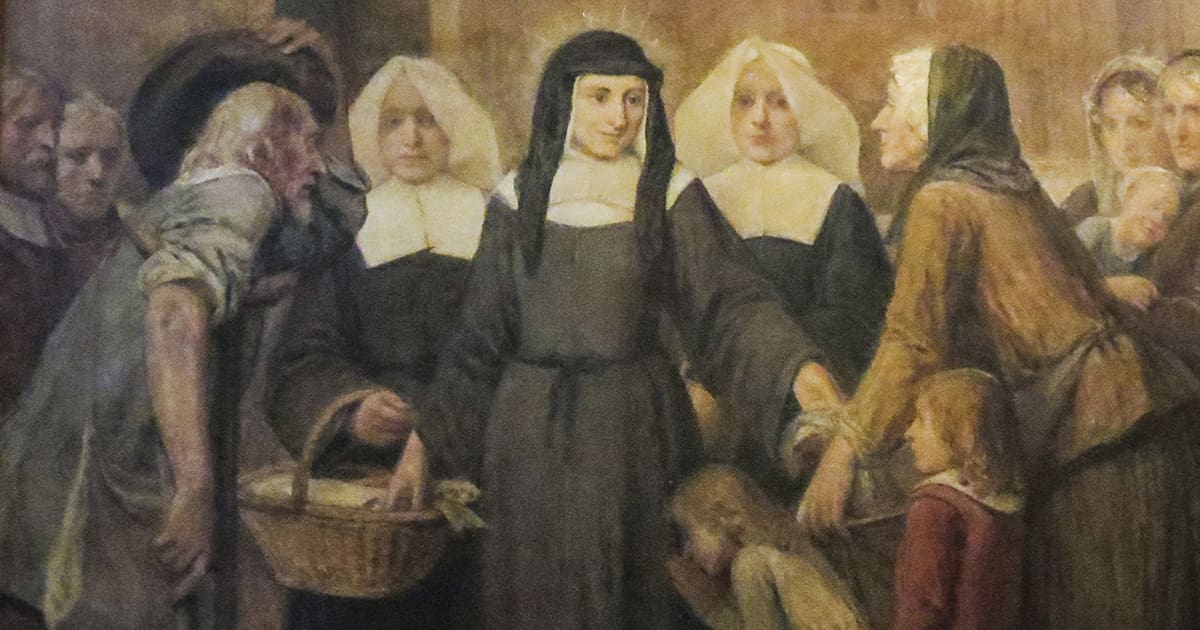Louise de Marillac and the Confraternities of Charity
After years of waiting, in May 1629, Louise de Marillac was finally invited by Vincent de Paul to assist in his ministries. He entrusted to her the task of revitalizing and reorganizing the Confraternities of Charity, the first Ladies of Charity, which were scattered across the countryside of France. Vincent wrote to Louise simply, “Father de Gondi sent me word to come by coach to see him in Montmirail. … Do you feel like coming, Mademoiselle?”1 Thus initiated life-changing events in Louise’s life which transpired over the next 35 years. The impact continues to be felt in the Vincentian Family today.
Once Louise began this ministry, she learned quickly of the difficulties being experienced by the charities. She employed wise, effective strategies as she accompanied them. When she arrived in a town, Louise would gather all the members of the Confraternity and listened carefully to the report of their work and of their challenges. By asking specific, direct questions, she enhanced her knowledge of the situation. Then she was ready to begin her creative, innovative re-organization. Louise always began by praising the good things happening. Only then did she offer correction. Next, she focused on any particular problems. Not content with simply making recommendations to the members of the Confraternities, Louise chose to show them by putting her suggestions into practice, i.e., for a few days she would take on the duties of the Superior/President, then those of the Treasurer and finally, those of the person visiting the sick. Through hands-on, simple tasks, i.e., providing food, giving clothing and medications as needed and providing hospitality, Louise involved herself in the day-to-day efforts of the women. In this way, everyone had a living example for their ministry as Louise modeled seeing Christ in the faces of those served.
Louise also showed sincere interest in the children’s education. In the places where there was already a teacher, Louise supported her work and gave her Ideas and ways to improve her lessons. Where there was no teacher, Louise chose one of the liveliest, young members and carefully prepared her to be able to perform this especially important service.
During these visits to the Charities, Louise discovered the importance of working in close collaboration with the parish priest and the bishop. In order for the Confraternity of Charity to function smoothly and for the service to persons living in poverty to be beneficial, it was vital that the parish priest be included, on board and supportive. Overall, Louise encouraged the ladies to lead holier lives with a deeper commitment to this God-given call and mission.
As follow-up, Louise informed Vincent, in great detail, of all the difficulties encountered and suggested solutions to him, hoping for his approval. In 1630, Vincent wrote, commending and cautioning her in these words, “I praise God that you have the health of the sixty people for whose salvation you are working, but I beg you to let me know right away whether your lung is being irritated by your talking so much or your head by so much confusion and noise.”2 He was concerned. Louise carried on!
Reflection: What does Louise’s leadership style teach us for today, for our ministry as Ladies?
References:
1. Vincent de Paul Correspondence, Coste, volume 1 #38 pages 63-64
2. ibid, #40 page 67
“How St. Louise Revitalized and Organized the Confraternities of Charity” https://famvin.org/en/2022/08/14/how-st-louise-revitalized-and-organized-the-confraternities-of-charity/
Brejon de Lavergnée, Matthieu, The Streets as a Cloister, History of the Daughters of Charity, 2020.
Carol Schumer, D.C.
Source: Ladies of Charity of the United States of America, Servicette, Vol 63, No. 2, Winter 2023
Tags:









0 Comments